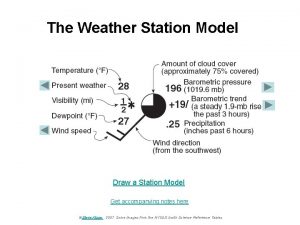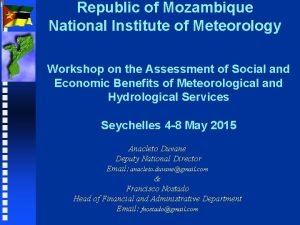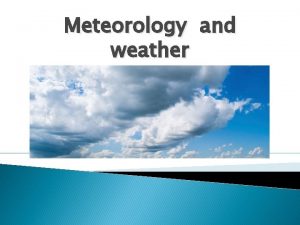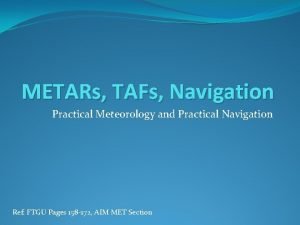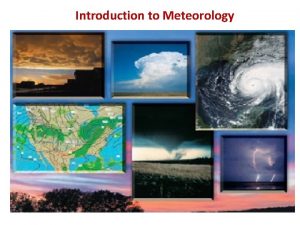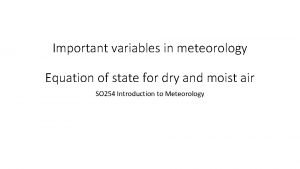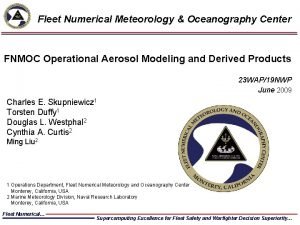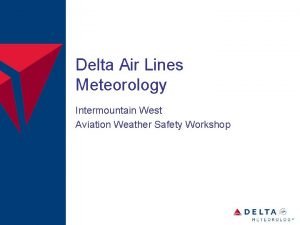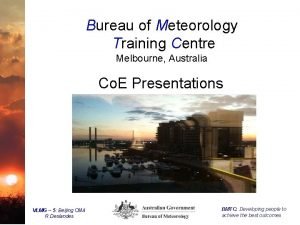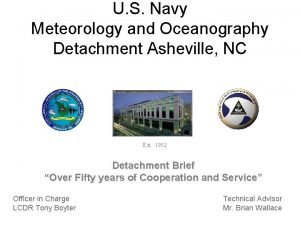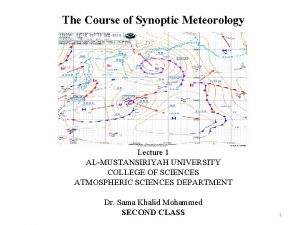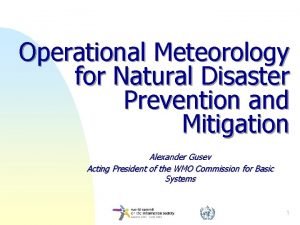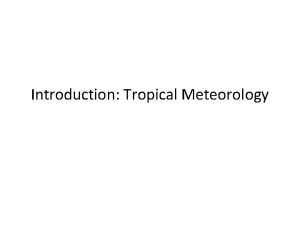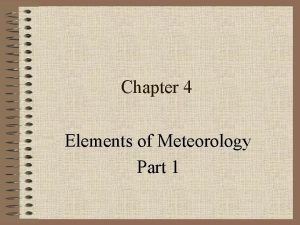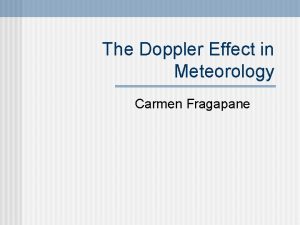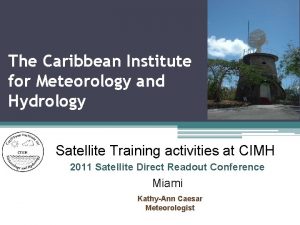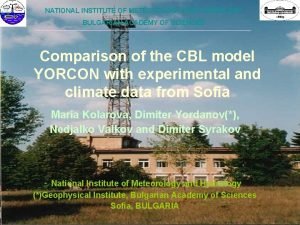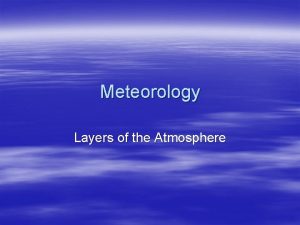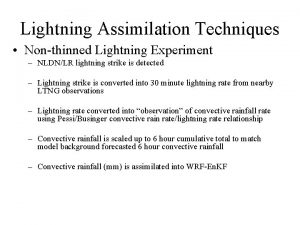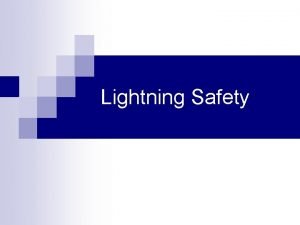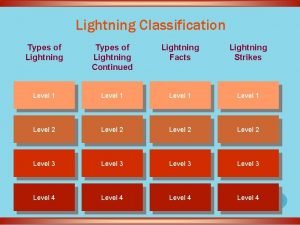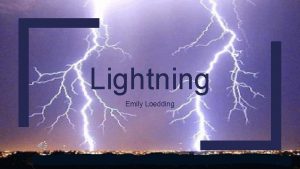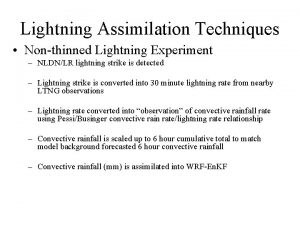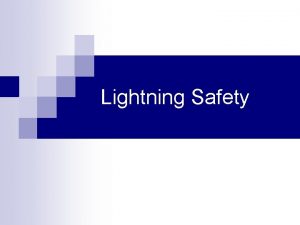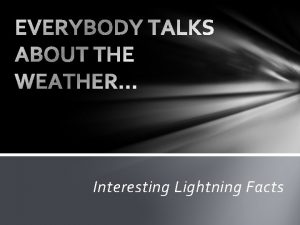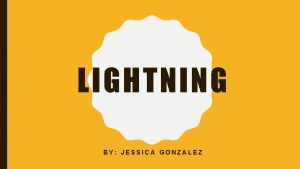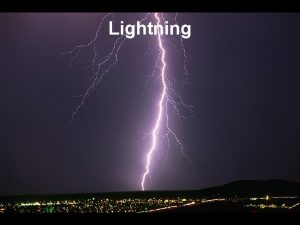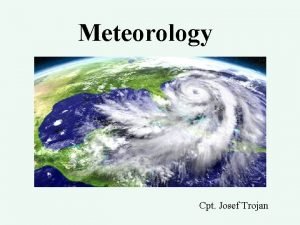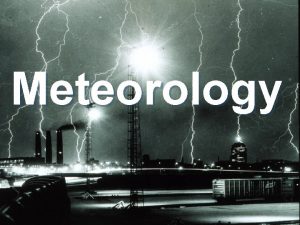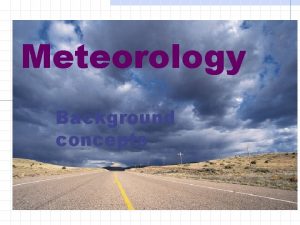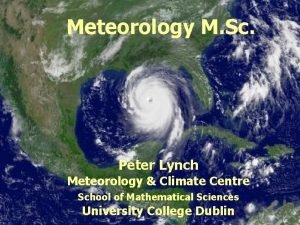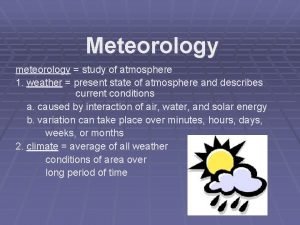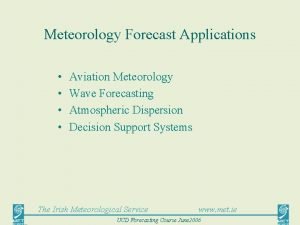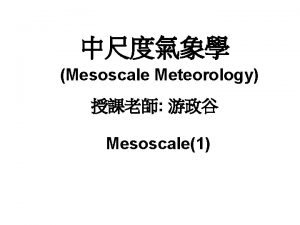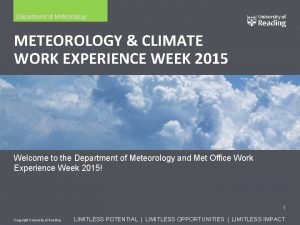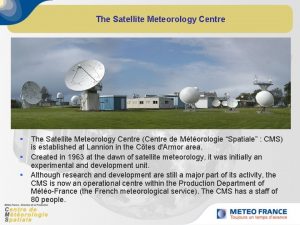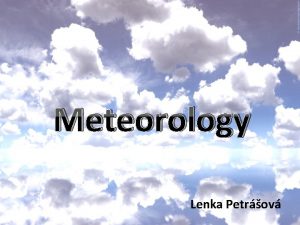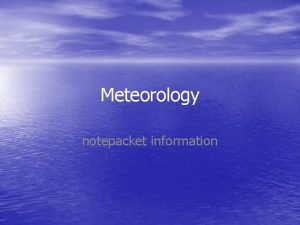Meteorology Unit 5 Lightning History Lightning as a



























- Slides: 27

Meteorology Unit 5 - Lightning

History • Lightning as a safety threat receives less attention than hurricanes, tornadoes, and flash floods. – Usually kills only one person at a time • Lightning has historically been the leading cause of weather related death • In recent years, flash flooding has caused more fatalities

What is lightning? • Lightning - Energy in the form of discharged heat and light

How does lightning form?

Hang on… it gets complicated

Lightning Formation • Storms are positively charged on the top of the cloud and negatively charged on the bottom • The ground is usually negatively charged but reverses polarity when a storm passes over, becoming positive • Within a cloud, water and ice particles are constantly moving past each other due to the convective currents • The particles become charged (think like static electricity and a balloon) • More convection = more electrical potential • If there enough turbulence in the cloud, the charged particles begin to separate • Charged particles seek their opposites in order to neutralize

Leaders & Streamers • Streamers of negatively charged particles come down from the cloud and attract leaders of positively charged particles from the surface • When the pathway between the streamers and leaders is complete, a spark is formed, and energy is discharged as heat and light

Lightning Types • Cloud-to-ground lightning – the charged pathway reaches from the cloud to the ground • In-cloud lightning - The charged particles may find each other and discharge energy within the cloud.

Lightning Facts • A flash of lighting can produce 1 billion volts of energy or up to 200, 000 amps. • Flashes can be 3 miles long, but only 1 -3 cm wide • A single flash of lightning unleashes as much energy as blowing up a ton of dynamite • A strike is made up of between three and twelve individual lightning “strokes” each lasting only a few thousandths of a second • One storm in the Midwest produced over 15, 000 lightning strikes to ground in a 6 hour period

St. Elmo’s fire • St. Elmo’s fire – A gap in electrical discharge. Can be seen as blue light sometimes preceding a lightning strike

What is thunder?

Thunder • Thunder is the sound produced by lightning’s discharge of energy • Lightning travels around 300 million m/s and sound travels at 300 m/s • The difference creates a shockwave, which is the sound we hear as thunder • To determine the distance you are from the storm, count the seconds between the lightning flash and thunder and divide by 5. This is the approximate distance in miles from you to the lightning

What happens when lightning strikes? • Lightning can cause structural damage, structural fires, and forest fires • Lightning kills and injures in two ways: – Direct strike – Side flash

Death and Injury • Lighting deaths average around 40 per year in the USA • Lighting causes 2. 5 times more injuries per year than deaths • Men are injured significantly more often than women


Injuries - Exit

Injuries – Lichtenberg Figures

Lightning Injuries

Side Flash • Side Flash- lightning striking near a person • Can cause injury, blindness, deafness, or death • Depends on many factors – Distance to the ground strike point – Soil conductivity (wet soil conducts better than dry soil) – Strength of electric current • Most common outdoors but can happen indoors through phones, electrical appliances, and water pipes connected to sinks, showers, and baths

Side Flash

Death and Injury The most common deaths and injuries due to lightning occur • Near or in water • Near or under a tree • Near a vehicle, home, or building • On a golf course, ball field, or in other open areas.

What do I do? ?

Safety Pay more attention to lightning than to rain Plan ahead DON’T BE THE HIGHEST OBJECT Don’t be near or connected to anything taller than its surroundings, like trees or buildings • Go into a building or vehicle with a solid metal roof. Do not contact any metal. • •


Worst Case Scenario Lightning may be about to strike if: • Your hair is standing on end • Your skin begins to tingle • You hear clicking sounds • You see St. Elmo’s Fire No longer recommended – Crouch on the balls of your feet to minimize your surface area in contact with the ground

Worst Case Scenario Now recommended – RUN.

Worst Case Scenario RUN – Keeps you moving towards a safe place – Only one foot touching the ground at a time – Distance from others
 Unit 6 review questions
Unit 6 review questions How to draw a station model
How to draw a station model Cisk meteorology
Cisk meteorology Mozambique national institute of meteorology
Mozambique national institute of meteorology Penn state meteorology jobs
Penn state meteorology jobs Meteorology is the study of
Meteorology is the study of Metars tafs
Metars tafs Mesopause definition
Mesopause definition Meteorology hydrology and water management
Meteorology hydrology and water management Meteorology equations
Meteorology equations Fleet numerical meteorology and oceanography center
Fleet numerical meteorology and oceanography center Delta meteorology
Delta meteorology Study meteorology australia
Study meteorology australia Cin meteorology
Cin meteorology Weather map station model light rain
Weather map station model light rain Fnmod
Fnmod Synoptic meteorology course
Synoptic meteorology course What does the diagram illustrate about turbidity currents?
What does the diagram illustrate about turbidity currents? Operational meteorology
Operational meteorology Latvian environment, geology and meteorology centre
Latvian environment, geology and meteorology centre Introduction to tropical meteorology
Introduction to tropical meteorology Elements of meteorology
Elements of meteorology Types of visibility in meteorology
Types of visibility in meteorology Doppler effect meteorology
Doppler effect meteorology Caribbean institute for meteorology and hydrology
Caribbean institute for meteorology and hydrology Yorcon
Yorcon Meted meteorology
Meted meteorology Math in meteorology
Math in meteorology

